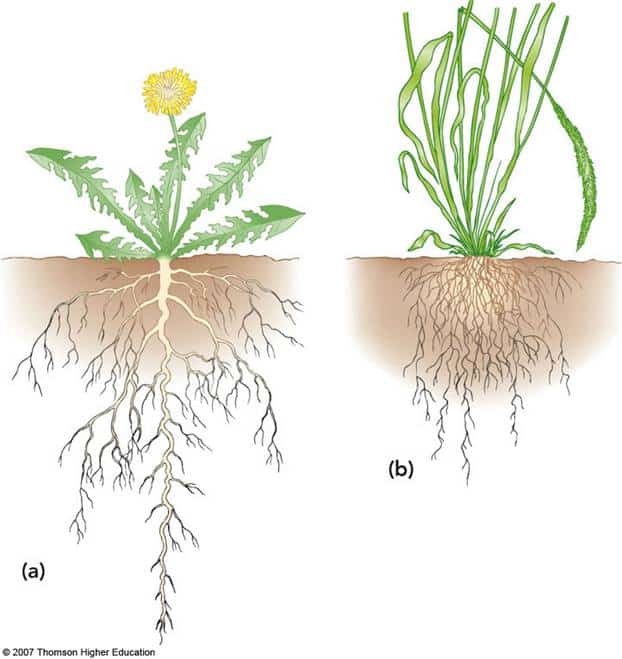During periods of hot weather, if a lawn is left unwatered, it’s common for large areas of soil to become compact. This is known as localised soil compaction. In many cases, this soil compaction can be alleviated by aerating the area, and in some cases applying a dry patch treatment.
However, during times of prolonged high temperatures and low rainfall (such as the conditions we exeripenced during summer 2018), large bare patches can form. If left unwatered through the high temperatures, these large bare patches rarely come back, even after the rain comes back!
What causes these patches?
Hot weather and low rainfall will cause the soil in your lawn to dry out. The first areas of lawn to dry out will be areas that have a high level of soil compaction (localised compaction). That’s because these areas are unable to absorb water as well as areas that have less soil compaction. As the soil dries out, the leaves of the grass plants in your lawn will also dry out, causing the plants to go dormant. As the grass plants leaves dry out and detach from the plant, they turn in to thatch. Thatch is the spongey layer of fibrous material that is found at the base of the grass plants and is found on most lawns to some degree or another.
When it starts to rain again, the soil will start to become wet, and the grass plants will begin to grow new leaves. In many lawns, however, large areas of lawn can find it hard to recover. These are the areas of localised compaction that we saw dry out first. The longer the soil is left dry, and the higher the air temperature, the more tightly knit the thatch will become. This tightly knitted thatch will severely restrict the flow of water through to the already compacted soil underneath, and the grass plants will find it hard to recover. The plants that do manage to make it will be few and far between, and will struggle to penetrate the thatch layer, and spread throughout the soil.
How can I prevent this from happening to my lawn again in the future?
The answer is very simple. Water it. For a lawn to remain healthy, it’s important that the soil never dries out. Most plants hate it when the soil dries out. House plants wont last long if you forget to water them. The grass plant has a great coping mechanism that makes it go dormant. However, this is not ideal.
How do I repair these areas?
To help your lawn, we would highly recommend our Booster Treatments; scarification, aeration and overseeding. Scarification will help to remove the thatch. Aeration will help to reduce the compaction, and overseeding will help to fill in the bare patches. In some cases, these areas may need a patch repair or renovation to help them recover.
Why does it look worse on lawns that are well maintained?
Remember earlier, we discovered how the leaves of the grass plants dry out and form thatch? On well-maintained lawns, there is a much greater number of grass plants. A greater number of grass plants drying out will form a bigger, more tightly knitted thatch layer. At the same time, the surrounding areas will stand out against any bare areas.
Why are there more weeds than usual?
During periods of dry weather, you’ll notice weeds will start to invade at a much faster rate than normal. The reason for this is that many lawn weeds will have a ‘tap root’. Tap roots are large roots that grow deep in to the ground where water is more readily available. Grass plants do not have a tap root, and their roots generally do not grow more than an inch or two in to the soil.


During dry spells, the grass plants become weak due to their inability to absorb moisture. As the grass plants die back, weeds will use this opportunity to flourish.
The best method of promoting deeper root growth is hollow-tine aeration and top-dressing.
During these dry spells, weeds will continue to grow and take advantage of the dry conditions, even after a weed control is applied. This is becaase our weed control application wil lonly control the weeds that are present at the time of application.

